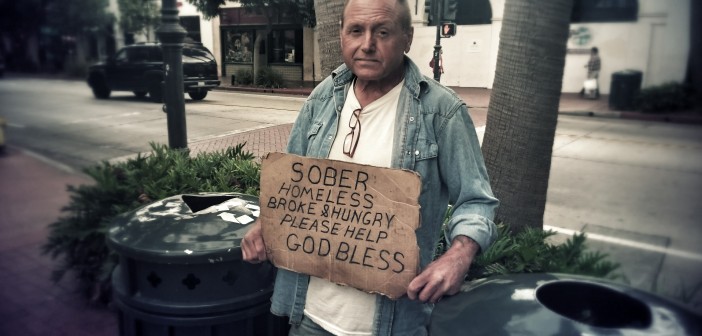Why are people homeless in the United States?
I’ve been interested in this question since I first came to Santa Barbara from Norway in 2012. After doing some research, I was surprised to find out that there are about as many homeless people in the entire country of Norway (population 5,1 million) as there are in Santa Barbara County : 6,250
One of the first things I noticed while walking down State Street for the very first time was how “normal” the homeless population in Santa Barbara seemed compared to Norway. One man was playing a keyboard, another was cuddling with his dog, while a third was in a wheelchair. I even saw a guy holding a sign saying “Lost my job. Don´t have a home. Anything helps.”
According to the Norwegian Salvation Army, there are two groups of homeless people in Norway; drug users who refuse the help they are offered and foreigners who are illegally living in the country. Foreigners staying illegally are not entitled to government benefits because they do not contribute to the welfare state through taxes.
The Salvation Army works to help the drug users, but only the ones who refuse help end up on the street. When the Norwegian government can not provide housing for the homeless, the homeless are offered to sleep in shelters, old churches or buses. On average only 15 people sleep on the streets in Oslo, the capital of Norway, each night. Out of these, only 3-5 have lived on the streets for a significant period of time.

Every day homeless people struggle to find a place to sleep
Immediately I started to feel sorry for the homeless people in Santa Barbara; in my opinion some seem innocent of their own fate. I believe people who have lost their jobs, people with physical and mental health issues, and Veterans struggling to get back to a normal life do not belong on the streets. One day, I even saw one of my old classmates from my previous school in California sitting on a bench on State Street begging for money.
“Homelessness as a choice is a myth and an opportunity to avoid action,”according to Central Coast Collaborative on Homelessness (C3H). In an article from Santa Barbara Independent, C3H explains how Point-In-Time count gathered hundreds of volunteers to a survey to assess individuals experiencing homelessness in 2013. Nearly 50 percent reported becoming homeless after experiencing economic loss, loss of employment, or loss of homes. Over 55 percent of the people conducting the survey lived in Santa Barbara County prior to becoming homeless. Another nine percent reported becoming homeless after finishing military service. C3H strongly believe these people did not choose homelessness.

Homeless at the pier. Photo: Julie Stensrud
There are various causes for the large number of homeless people in Santa Barbara. 14 percent report they lived in foster care before they became homeless. Slightly more than half had alcohol issues before they became homeless and might have lost their income as a consequence. Mission & State lists other factors contributing to the high rate of homelessness: poverty and lack of personal resources, substance abuse, unemployment and underemployment, lack in job skills, domestic violence and high housing costs.
Today, slightly more than half of the homeless people in Santa Barbara have mental and health issues. Out of these, 30 percent have serious mental health problems.
I want to look more at this issue and figure out why the differences among the homeless populations are so big. If this article interested you, make sure to read the Odyssey next week and learn more about the Norwegian welfare state, which I believe is the main reason for the differences.




